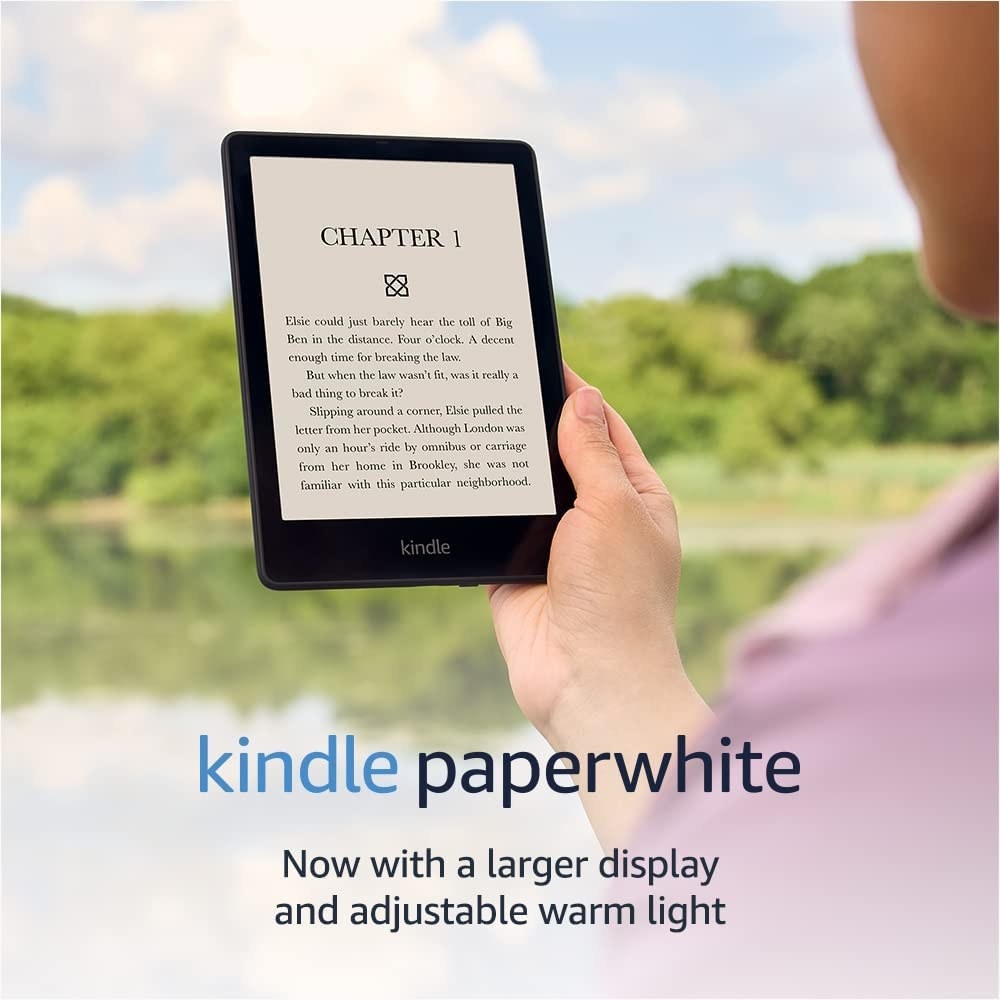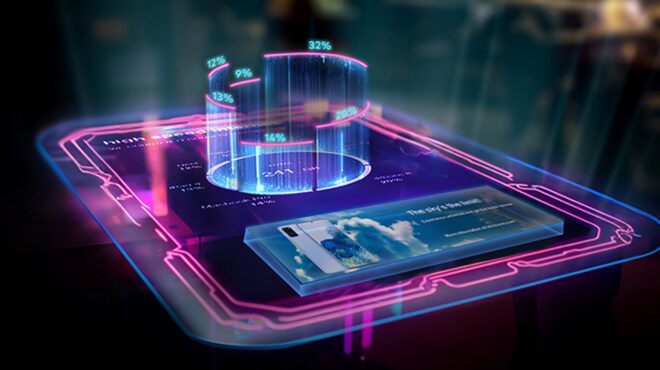Amazon Holiday Sale: Best Budget-Friendly Android Tablet Now 32% Discounted
That’s $150 for a robust, budget-friendly Samsung device.
Update to Google Meet Tackles Significant Audio Problems
Google Meet has launched a notable update that allows users to share the complete system audio during presentations, a functionality that has been highly anticipated by many. Previously, audio sharing was confined to a single tab, which created difficulties for presenters who needed to share audio from various applications or their entire system. This update now allows users to share audio from their whole device when presenting a window or in full-screen mode, improving the overall presentation experience.
The new functionality is accessible on macOS 14.02+ and Windows 11, requiring Chrome version 142 or later. However, it is turned off by default, meaning users must activate the “Also share system audio” option manually each time they present. This extra step is essential to guarantee that the audio is delivered during the meeting.
Despite this progress, users with adaptive audio configurations might still encounter restrictions, as they could only share sound from Chrome tabs. This suggests that the feature is still being polished and may see additional enhancements in the future.
The rollout of this feature is currently in progress for Rapid Release domains, with a wider availability anticipated in early 2026. For individuals who regularly conduct presentations that extend beyond mere slides, this update is a significant improvement to Google Meet’s functionality.
Read MoreApple Introduces Open-Source Framework for Transforming 2D Images into 3D Perspectives
### SHARP: Transforming 3D Scene Reconstruction from Individual Images
Apple has unveiled a groundbreaking model known as SHARP, which stands for Sharp Monocular View Synthesis. This model can reconstruct a lifelike 3D scene from a single 2D image in less than a second, representing a major breakthrough in computer vision and graphics.
#### Overview of SHARP
In the research paper titled [Sharp Monocular View Synthesis in Less Than a Second](https://arxiv.org/abs/2512.10685), Apple’s researchers detail how SHARP was trained to generate a 3D representation of a scene while preserving real-world distances and scales. The model employs a single feedforward pass through a neural network to regress the parameters of a 3D Gaussian representation of the scene, achieving this in under a second using standard GPU hardware.
The 3D Gaussian representation created by SHARP can be rendered in real-time, enabling the production of high-resolution lifelike images from nearby perspectives. This metric representation supports absolute scale and metric camera movements, which is essential for realistic scene reconstruction.
#### Technical Insights
SHARP functions by predicting a 3D representation of the scene, which can subsequently be rendered from various viewpoints. A 3D Gaussian is effectively a small, indistinct blob of color and light in space. When combined, these blobs can form a scene that appears real from a particular angle. Unlike conventional Gaussian splatting techniques that necessitate multiple images from varying perspectives, SHARP can generate a complete 3D Gaussian representation from just one snapshot.
To attain this functionality, SHARP was trained on vast datasets that included both synthetic and real-world images. This training equips the model to recognize common patterns of depth and geometry, allowing it to estimate depth and refine it based on accumulated knowledge when given a new image. As a result, SHARP can forecast the location and appearance of millions of 3D Gaussians in a single pass, enabling speedy scene reconstruction without the necessity for multiple images or lengthy optimization processes.
#### Limitations and Trade-offs
While SHARP excels at rendering nearby viewpoints with remarkable speed and precision, it is not without limitations. The model is primarily designed to generate realistic renderings from angles close to the perspective of the original image. This implies that users cannot examine entirely unseen sections of the scene, as the model does not generate these areas. This design choice contributes to the model’s speed, allowing it to yield results in under a second while ensuring stability and realism in the output.
#### Community Engagement and Future Directions
Apple has made SHARP accessible on
Read MoreMorgan Stanley Increases Apple Stock Price Target While Maintaining Overweight Rating
### Morgan Stanley Adjusts Apple Stock Price Target Amid Improved Revenue Forecast
The financial environment for Apple Inc. has experienced a significant change as Morgan Stanley recently raised its price target for the tech behemoth’s stock by 3%, increasing it from $305 to $315. This revision occurs despite the context of climbing memory costs, reflecting a more positive revenue outlook for the firm.
#### Price Target and Rating
Morgan Stanley’s choice to raise the price target signifies a consistent use of a 32x multiple applied to its updated earnings per share (EPS) projection for fiscal year 2027, which has been revised to $9.83 from an earlier estimate of $9.55. The investment firm has retained an “Overweight” classification on Apple, implying their belief that the stock will exceed market performance.
#### iPhone Shipments and Replacement Cycle
In its revised forecast, Morgan Stanley predicts a modest rise in iPhone shipments. Nevertheless, they also foresee an extension in the replacement cycle for iPhones, suggesting users will keep their devices for about one month longer than previously expected. This trend may affect overall sales figures in the near term but signifies a larger shift in consumer behavior.
#### Gross Margin and Revenue Forecast
The report indicates a projected reduction of 130 basis points in Apple’s gross margin, mainly due to higher memory input costs. However, this decline is anticipated to be counteracted by a 5% increase in revenue, which takes into account price increases resulting from commodity cost inflation. This combination of escalating costs and rising revenue highlights the intricacies of Apple’s present market standing.
#### Investment in AI and Operating Expenses
Morgan Stanley emphasized that Apple’s continuous investments in artificial intelligence (AI) are likely to result in elevated operating expenses relative to past trends. This strategic emphasis on AI is regarded as crucial for maintaining competitiveness in the swiftly changing tech landscape.
#### Market Implications
If Morgan Stanley’s updated price target comes to fruition, it would represent a 15.8% upside from Apple’s recent closing price of $271.84, which followed a 1.01% decrease in the stock. Earlier this month, Apple shares attained a new 52-week peak of $288.61, driven by optimism regarding the iPhone 17 upgrade cycle and other favorable market signals.
### Conclusion
Morgan Stanley’s adjusted price target for Apple reflects a sophisticated comprehension of the company’s existing hurdles and opportunities. While increasing memory costs present a margin risk, the overall revenue forecast remains encouraging, supported by strategic investments and anticipated growth in iPhone shipments. As Apple navigates these shifts, investor sentiment will likely stay closely linked to the company’s performance in the upcoming quarters.
Read MoreNASA’s MAVEN Mission Encounters Communication Disruption: Latest Information
NASA’s initial release indicated that the craft was functioning properly before its orbit around the red planet, but on December 6, upon re-emergence, communication between the spacecraft and NASA’s Deep Space Network was lost. Relevant teams are currently investigating the situation, but as of now, they have not been able to re-establish a successful connection.
Recent evaluations reveal that after re-emerging, MAVEN exhibited abnormal rotation, described as “rotating in an unanticipated fashion.” Through the tracking signal’s frequency, NASA’s teams inferred that the craft’s “orbital trajectory might have shifted.” There has been no indication from NASA regarding the reasons for the changes in orbit and trajectory. It could potentially have been hit by an unusual object or have altered its course due to a malfunction or failure.
MAVEN is an acronym for “Mars Atmosphere and Volatile EvolutioN,” and its primary mission is focused on studying the red planet’s upper atmosphere, ionosphere, and its interaction with the sun and solar wind; specifically to comprehend why the planet suffered atmospheric loss. The data gathered eventually led NASA to affirm that the sun is responsible for making the planet cold and desolate. The Curiosity rover on the surface also contributed to confirming that a significant amount of evaporation rendered the planet without water, which is a key reason for Mars’s lifeless state.
What additional information do we have about MAVEN?
Anticipated Apple Products for 2026: A Sneak Peek at 20 Revealed Innovations
leaks concerning upcoming Apple merchandise. Thanks to uncovered code from an early iOS 26 version, we now have an enhanced perspective on what the company is preparing for 2026 and the years to come.
Although earlier reports have already touched on some of these unreleased products, we now possess a more thorough insight into what Apple intends to unveil shortly. The most intriguing aspect is that 2026 is poised to become one of the most hectic years in the company’s timeline, as we may witness an expansion of its smart home offerings, the inaugural foldable iPhone, refreshed iPads, and entirely new Macs.
Despite the fact that the hardware disclosed in this initial build signifies that the company has been diligently testing new devices, it’s equally crucial to highlight that delays could happen or that Apple may choose to abandon a device if it fails to align with the company’s standards. Two instances of this are the second-generation AirTag, which has been inexplicably absent despite speculations of its readiness for release, and the second-generation iPhone Air, which is now anticipated to debut in early 2027 rather than late 2026.
Smart home gadgets and wearables
Google’s Gemini 3 Flash AI Model Stuns with Outstanding Speed and Cutting-Edge Capabilities
Experience Gemini 3 Flash today and discover just how much quicker Google’s AI has progressed for developing applications and tackling intricate subjects.
Thorough Handbook to Locate My Accessories for Improved Item Monitoring
# The Definitive Guide to Discover My Accessories: Ideal Stocking Stuffers for the Festive Season
In today’s technology-driven society, monitoring our possessions has become simpler, thanks to the comprehensive range of Discover My accessories. These devices not only boost our capacity to pinpoint significant items but also serve as considerate gifts this festive season.
## Grasping Discover My Accessories
Discover My accessories employ a low-energy Bluetooth signal that interacts with nearby Apple devices, avoiding reliance on GPS technology. This cutting-edge system securely transmits location information to the Discover My network, enabling users to find their belongings even from great distances, provided another Apple device is within reach.
Apple perpetually upgrades the Discover My network with novel features, including a mechanism for sharing item locations, increasing the value of these accessories.
## Premier Discover My Accessories
### AirTag
No catalogue of Discover My accessories would be complete without referencing Apple’s AirTag. Featuring a U1 chip for Precision Finding, a built-in speaker, and numerous other functionalities, AirTags are perfect for monitoring luggage, backpacks, keys, and beyond. Since their launch in April 2021, AirTags have undergone notable enhancements, incorporating new anti-stalking measures and improved notification alerts. They now can even be utilized with airlines for tracking luggage.
**Purchase AirTags:** [Apple Store](https://www.apple.com/shop/buy-airtag)
**Top AirTags Accessories:**
– Various cases and holders are accessible for personalizing and safeguarding AirTags.
### Chipolo’s Discover My Ecosystem
Chipolo offers a variety of trackers compatible with Apple’s Discover My ecosystem, enabling users to monitor them alongside their Apple devices. These tools use the Discover My network for real-time location tracking.
– **Chipolo LOOP:** A rechargeable tracker featuring a built-in loop holder for simple attachment to keys and bags.
– **Chipolo One Spot:** An AirTag-shaped tracker with an integrated keyring hole, eliminating the requirement for additional attachments.
### SwitchBot Wallet Finder
The SwitchBot Wallet Finder is crafted to fit seamlessly into your wallet, including a built-in keyring holder for added flexibility. It allows users to effortlessly track their wallets using the Discover My ecosystem.
**Purchase the SwitchBot Wallet Finder:** [Amazon](https://www.amazon.com)
### Pebblebee’s Discover My Ecosystem
Pebblebee offers multiple Discover My-compatible trackers, including:
– **Pebblebee Clip:** A compact tracker featuring a built-in keyring holder with up to 12 months of battery life, rechargeable via USB-C.
– **Pebblebee Tracker Universal Tag:** An ultra-small tracker providing up to 8 months of battery life with USB-C charging.
### Backpacks with Discover My Integration
For those seeking a comprehensive solution, select backpacks come equipped with integrated Discover My functionalities. Swissdigital offers a variety of backpacks that connect seamlessly to the Discover My network.
### Twelve South PlugBug
The Twelve South PlugBug is a USB-C fast-charging adapter that connects with Discover My, guaranteeing you’ll never misplace your charger again. It’s a useful addition to any traveler’s kit.
**Purchase the Twelve South PlugBug:** [Amazon](https://www.amazon.com)
### Nomad Discover My Tracking Card Pro
Nomad’s Discover My Tracking Card Pro showcases a sleek metallic design resembling a credit card. It integrates with Discover My, facilitating discreet tracking of wallets. The card wirelessly recharges via Qi or MagSafe chargers and lasts up to 16 months on a single charge.
**Purchase the Nomad Tracking Card Pro:**
Read MoreiOS 26.2 Brings New Features to Apple Podcasts, Responding to Long-Awaited Request for Apple Music
**Improvements in Apple Music Radio: An Exploration of Integration and Discovery**
Five years back, an Apple Music Radio program customized for personal preferences greatly improved music discovery for numerous users. Nonetheless, the challenge of finding new episodes continued until three years later, when Apple Podcasts merged Apple Music Radio programs. This merger simplified keeping track of new episodes, yet the experience was missing vital Apple Music features.
With the launch of iOS 26.2, Apple has effectively filled these voids in an unexpected and impactful way. The assimilation of Apple Music Radio programs into Apple Podcasts has now been enhanced, offering a more fluid listening experience.
In early 2021, crucial features such as notifications for programs, offline episode playback, and a straightforward method to follow preferred shows were recognized as vital enhancements for Apple Music Radio programs. For fans of particular genres, such as the pop-punk scene surrounding bands like blink-182, programs like “After School Radio,” hosted by Mark Hoppus, became standout weekly highlights. These programs not only offered entertainment but also aided in discovering new artists and albums, enriching the overall musical journey.
Despite the convenience of live listening, accessing on-demand content necessitated navigating through the Music app, which often resulted in frustration. Users devised alternatives, like using share sheets to capture URLs for easier access.
In 2023, Apple rolled out a series of features, encompassing notifications, offline playback, and the capacity to follow shows, in addition to playback synchronization with Apple Music Radio programs in Apple Podcasts. However, these advancements came with compromises: listeners found themselves missing track details and the quick ability to add songs to their libraries.
With the advent of iOS 26.2, Apple Podcasts has now integrated links to songs featured during episodes, permitting users to jump straight to tracks in the Music app. This feature not only allows users to save songs and delve into artists’ catalogs but also enhances the listening experience by providing context through auto-generated transcripts.
The incorporation of these features has revolutionized how users engage with Apple Music Radio programs, simplifying the process of discovering and enjoying music. However, concerns persist about the activity status of certain shows, such as “After School Radio,” which has not released new episodes in recent times.
In summary, the progression of Apple Music Radio programs, especially with the enhancements introduced in iOS 26.2, signifies a substantial advancement in music discovery and user experience, promising a more cohesive and enjoyable platform for music enthusiasts.
Read MoreChanning Tatum’s 2025 Crime Film Surges in Popularity on Paramount+ Following Initial Audience Neglect
a fantastic selection to portray Jake Sully in James Cameron’s “Avatar” films, which was close to becoming a reality.
What makes a speed robber from the Carolinas so intriguing?
<iframe class="gallery-image-video oembed" src="https://www.youtube.com/embed/GXecSGmQDEI" frameborder="0" allowfullscreen data-slide-url="https://www.bgr.com/2053396/channing-tatum-2025-crime-movie-roofman-paramount-plus-charts/" data-slide-num="1" data-post-id="2053396" data-slide-title="Channing Tatum's 2025 Crime Movie Is Taking Over Paramount+ After Audiences Ignored
Read More








